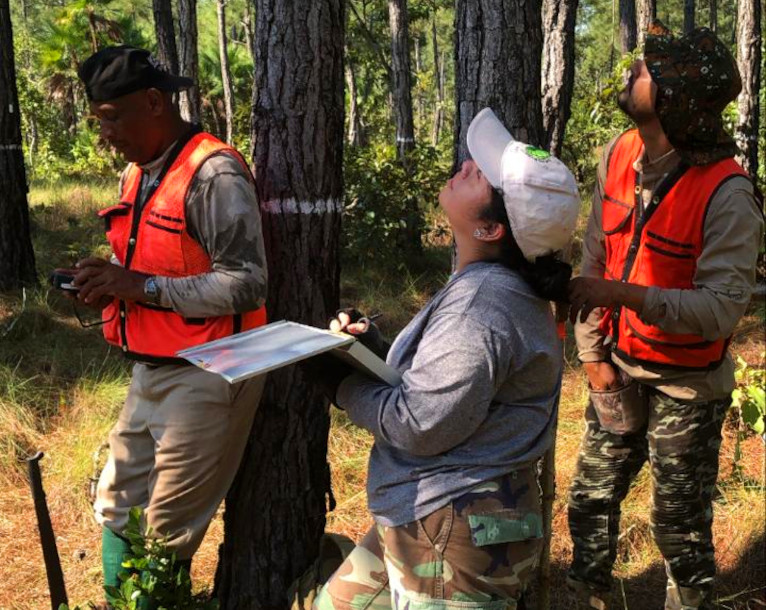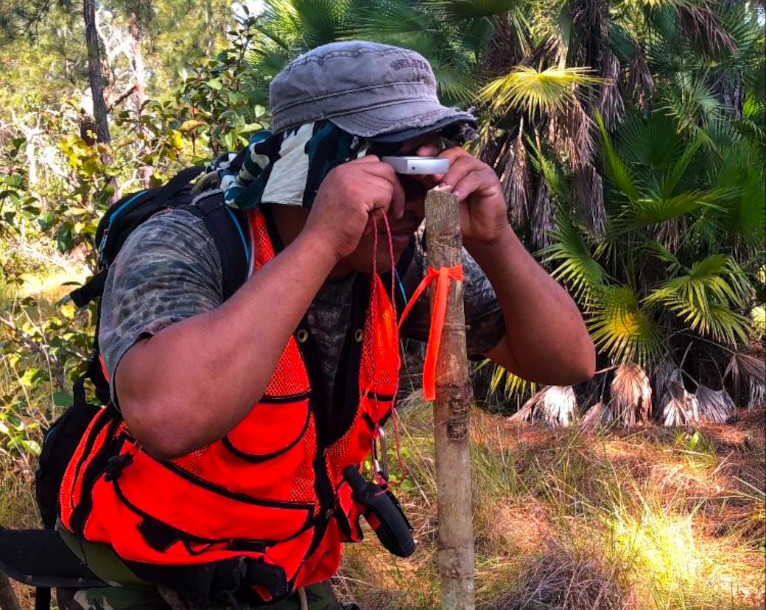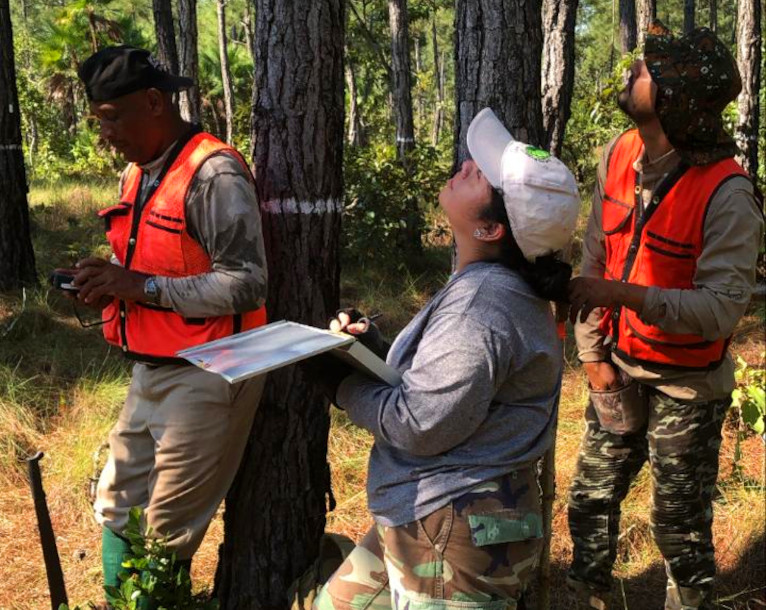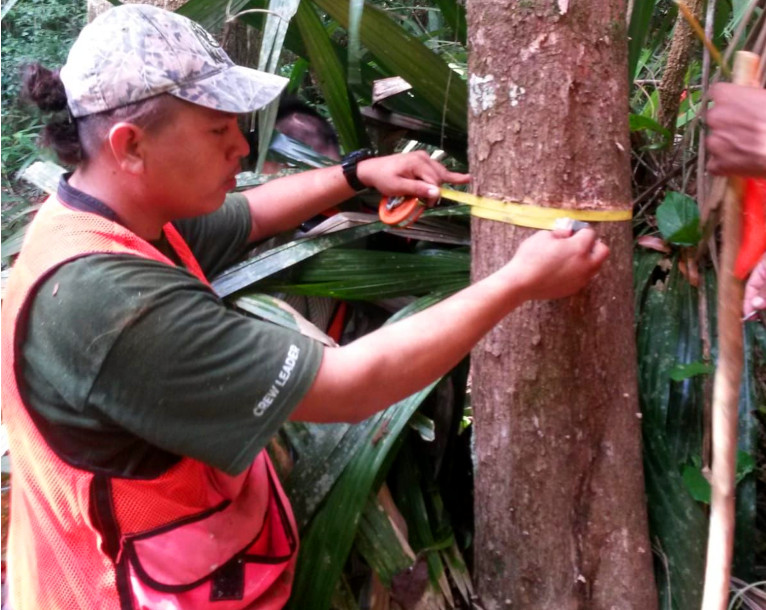Permanent Sample Plots
Home / Permanent sample plots
What are Permanent Sample Plots?
Permanent Sample Plots (PSPs) are permanently demarcated areas of forest, typically of 1 ha each (100 meters x 100 meters with 25 subplots/quadrats) , which are periodically remeasured. They are maintained over years and provide estimates of changes in forest stocking and volume. This information is essential for forest management.


Permanent Sample Plot History
1992 – 1997
Thirty (30) Permanent Sample Plots were established under the Forest Planning and Management project. These plots were established with the aim to quantify the growth and mortality patterns of tree species found in the broadleaf forests of Belize. This information was used to model the impact of timber harvesting and helped devise sustainable harvesting regimes for the country.
2010-present
An additional thirty (30) Permanent Sample Plots were established under various projects and further forest categories including Pine Forests and Secondary Broadleaf Forest. The methodology is standardized and modified based on the vegetation type it was established in.
The total number of plots has increased to sixty (60) Permanent Sample Plots established within the country with the aid of funding from various projects/funding entities. These projects/funding entities include the Forest Planning and Management Project, Global Climate Change Alliance (GCCA) – Adapting to Climate Change Project, Darwin Initiative SUSFOR project, Key Biodiversity Areas (KBA) Project, Selva Maya Natural Resources Project (BMZ/KfW/IUCN), The Rufford Foundation, Programme for Belize, and Dr. Steven Brewer.


Vegetation Types Studied within the Permanent Sample Plots
- Lowland Broadleaf Dry Forest (Two Plots)
- Lowland Broadleaf Moist Forest (Thirty Tree Plots)
- Sub montane Broadleaf Moist Forest – (Seventeen Plots)
- Secondary Broadleaf Forest (Four Plots)
- Pine Forest Plots (Four Plots)
Parameters Collected
- Local Name/Species
- Diameter at Breast Height (DBH)
- Eastings and Northings
- Commercial Height
- Total Height
- Grading is given for three parameters (Crown Position, Crown Form and Synnott Climber Presence). These are all done on a grading system of 1-5.
- Comments are recorded based on observations which indicate health of tree such as presence of fruit/seed, Alive with hole, Alive with rot, Crown damage due to defoliation by insects, Termite presence (crown or bole), presence of fungus, among other observations.
- In Quadrats 1-25 all stems greater than or equal to 10 cm in DBH are accounted for and recorded.
- In Quadrat 13 all stems greater than or equal to 1cm in DBH are accounted for and recorded. This is done for only one quadrat…


Importance of Permanent Sample Plot Establishments/Remeasurements for National Data Requirements
PSPs provide the most comprehensive data set on tree diversity & forest structure. This data is stored in a national PSP Database. The data from the PSPs were used in the development of evidence-based harvest guidelines and this is used for the calculation of quotas which assist in meeting CITES requirements.
The data obtained from the Permanent Sample Plots are also used to obtain biomass estimates, carbon stocks, carbon stock changes and growth rates from the land use types/categories available such as mature broadleaf forests and pine forests providing national emission factors for reporting purposes.

